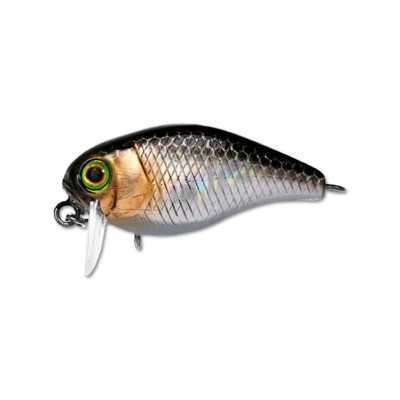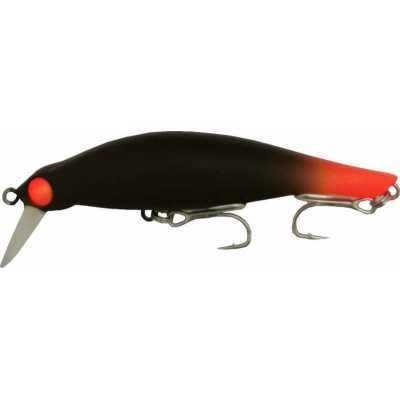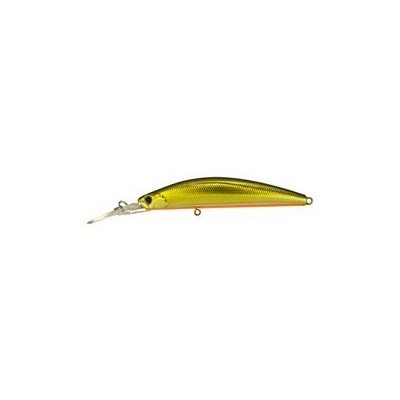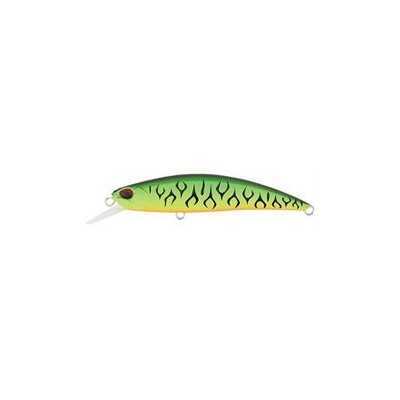Spiningavimas

Spiningavimas: Populiariausias Žvejybos Būdas Lietuvoje
Spiningavimas: Įdomus ir Azartiškas Žvejybos Būdas
Spiningavimas, kaip vienas iš azartiškiausių mėgėjiškos žvejybos būdų, suteikia unikalią patirtį ir yra populiarus tarp Lietuvos žvejų. Šis žvejybos metodas išsiskiria savo dinamika ir aktyvumu, leidžiančiu žvejui nuolat judėti ir ieškoti žuvies įvairiose vandens telkinio vietose. Skirtingai nuo statinės žvejybos, kur žvejas laukia, kol žuvis pati priartės prie masalo, spiningavimas reikalauja nuolatinio masalo metimo ir traukimo, kas sukuria nenutrūkstamą veiksmo grandinę.
Vienas iš pagrindinių spiningavimo privalumų yra adrenalino pliūpsnis, kuris užvaldo, kai žuvis kimba ant kabliuko. Šis jausmas yra nepakartojamas ir dažnai tampa pagrindine priežastimi, kodėl žvejai renkasi būtent šį žvejybos būdą. Be to, spiningavimas reikalauja tam tikrų įgūdžių, kantrybės ir strateginio mąstymo. Kiekvienas metimas ir traukimas yra galimybė patobulinti savo techniką ir geriau suprasti žuvies elgseną bei vandens telkinio ypatumus.
Žvejojant spiningu, žvejai gali pasinaudoti įvairiais masalais, tokiais kaip blizgės, vobleriai, guminukai ar kiti dirbtiniai masalai, kurie imituoja natūralų grobį ir vilioja žuvis. Tokia įvairovė leidžia žvejams eksperimentuoti ir rasti efektyviausius būdus pritraukti žuvį. Spiningavimas taip pat suteikia galimybę išbandyti skirtingas žūklės technikas, priklausomai nuo sezono, vandens telkinio tipo ir žuvies rūšies.
Ne mažiau svarbus yra ir pats buvimas gamtoje. Spiningavimas suteikia progą pabūti gryname ore, pasigrožėti nuostabiais kraštovaizdžiais ir atsipalaiduoti nuo kasdienės rutinos. Unikalūs ir neišdildomi įspūdžiai, patirti spininguojant, dažnai tampa nepakeičiama dalimi žvejo gyvenime, o kiekviena sėkminga žūklė - dar viena istorija, kuria galima dalintis su draugais ir artimaisiais.
Spiningavimo Populiarumas Lietuvoje
Lietuvoje spiningavimas yra plačiai pripažintas kaip populiariausias žvejybos būdas. Šis fenomenas yra sąlygotas tiek natūraliai gausių žuvų išteklių, tiek gilios žvejybos tradicijų, kurios perduodamos iš kartos į kartą. Daugelis žvejų vertina spiningavimo dinamiką ir galimybę nuolat tobulėti, kas ypač traukia tiek pradedančiuosius, tiek patyrusius žvejus.
Spiningavimo populiarumą stiprina ir Lietuvos vandens telkinių įvairovė, kuri suteikia galimybę išbandyti skirtingas technikas ir sugauti įvairias žuvų rūšis. Nesvarbu, ar tai būtų ežerai, upės ar tvenkiniai, kiekvienas telkinys siūlo unikalius iššūkius ir malonumus. Dėl to žvejai dažnai keliauja po šalį, ieškodami naujų vietų ir patirčių.
Be to, spiningavimas Lietuvoje yra ne tik individuali veikla, bet ir bendruomenės dalis. Yra daugybė žvejų klubų ir asociacijų, kurios organizuoja renginius, konkursus ir mokymus. Tai sudaro galimybes dalytis patirtimi, mokytis naujų technikų ir tobulinti savo žvejybos įgūdžius. Tokios bendruomenės veikla ne tik skatina spiningavimo populiarumą, bet ir stiprina socialinius ryšius tarp žvejų.
Galiausiai, spiningavimo tradicijos Lietuvoje yra puoselėjamos ir dėl ekonominių priežasčių. Žvejyba, įskaitant spiningavimą, yra svarbi turizmo dalis, pritraukianti ne tik vietinius, bet ir užsienio svečius. Tai skatina vietos verslus siūlančius žvejybos reikmenys ir ne tik, nuo apgyvendinimo paslaugų iki žvejybos įrangos parduotuvių, ir prisideda prie regionų ekonominio vystymosi.
Pagrindinės Žuvų Rūšys, Gaudomos Spiningu
Lietuvoje spiningavimas yra itin populiarus žvejybos būdas, leidžiantis sugauti įvairias žuvų rūšis. Viena dažniausiai spiningu gaudomų žuvų yra lydeka. Ši plėšri žuvis žavi žvejus savo dydžiu ir kovingumu, todėl dažnai reikalauja specialių technikų ir įrankių. Tinkamai parinkti vobleriai ar silikoniniai masalai gali padėti sėkmingai sugauti šias grobuones.
Ešeriai taip pat yra populiari spiningavimo žuvis Lietuvoje. Nors jie nėra tokio dydžio kaip lydekos, ešeriai garsėja savo aktyvumu ir skanumu. Dažniausiai naudojami spiningavimo technikos apima mažus voblerius ir blizges.
Starkiai yra dar viena vertinga žuvis, kurią galima sugauti spiningu. Jie mėgsta gilias vandens vietas ir dažnai reikalauja specialių spiningavimo būdų, tokių kaip jigingas. Starkiai yra vertinami dėl savo subtilaus skonio ir didelio dydžio galimybių.
Be minėtų žuvų, spiningu gaudomos ir lašišos bei šlakiai. Šios žuvys yra ypatingai vertinamos dėl savo kovingumo. Lašišos ir šlakiai dažnai reikalauja specialių įrankių ir technikų, kurie yra ilgi ir galingi, skirti būtent šiems plėšrūnams.
Šapalai ir šamai taip pat dažniausiai gaudomi spiningu. Šapalai yra žinomi dėl savo atsargumo, todėl žvejai turi būti itin kantrūs ir naudoti subtilius masalus. Šamai, kita vertus, yra didelės ir stiprios žuvys, kurios reikalauja tvirtų įrankių ir atsargių technikų.
Galiausiai, salačiai yra dar viena rūšis, kurią galima sugauti spiningu. Šios žuvys yra aktyvios ir greitos, todėl dažnai reikalauja specialių masalų ir technikų, kad būtų sugautos sėkmingai. Visos šios žuvų rūšys suteikia žvejams galimybę nuolat tobulėti ir prisitaikyti prie skirtingų žūklės sąlygų, taip pat mėgautis įvairių žuvų gaudymo iššūkiais ir malonumais.
Baltos Žuvies Spiningavimas su Nano Spiningais: Auganti Tendencija
Pastaruoju metu Lietuvoje vis labiau populiarėja baltos žuvies spiningavimas, naudojant nano spiningus. Ši žūklės forma siūlo žvejams unikalią patirtį, leidžiančią išbandyti savo įgūdžius gaudant mažesnes, tačiau ne mažiau įdomias žuvis, tokias kaip karšiai, plakiukai, kuojos ir kitos taikios žuvys. Nano spiningai, pasižymintys ypač dideliu jautrumu, leidžia žvejams jausti net ir mažiausią kibimą, todėl šis žūklės būdas tampa ypač patrauklus tiems, kurie siekia tikslumo ir subtilumo žvejyboje.
Naudojant nano spiningus, žvejyba tampa itin intensyvi ir reikalaujanti didelio susikaupimo. Šie įrankiai yra ploni, lengvi ir labai jautrūs, todėl žvejai gali lengvai pastebėti net ir menkiausius pokyčius vandenyje. Tai suteikia galimybę greitai reaguoti ir padidinti sugavimo sėkmės tikimybę. Be to, mažesnės žuvys, tokios kaip kuojos ar plakiukai, dažnai būna itin judrios, todėl jų gaudymas su nano spiningais tampa tikru iššūkiu ir pramoga.
Žvejai, pasirinkę baltos žuvies spiningavimą su nano spiningais, dažnai atkreipia dėmesį į įvairius faktorius, tokius kaip masalas, vietos pasirinkimas ir žuvų elgsena. Mažesni masalai ir itin tikslus metimas yra būtini norint sėkmingai sugauti mažesnes žuvis. Be to, svarbu suprasti, kur ir kada šios žuvys maitinasi, kad būtų galima padidinti sugavimo tikimybę.
Ši auganti tendencija Lietuvoje ne tik praplėčia žvejybos galimybes, bet ir skatina žvejus labiau domėtis aplinkosauga bei atsakingu žvejybos praktiku. Nano spiningų naudojimas padeda mažinti žuvų sužalojimo riziką, nes šie įrankiai leidžia tiksliau valdyti žūklės procesą ir išvengti nereikalingo žuvų streso.



































